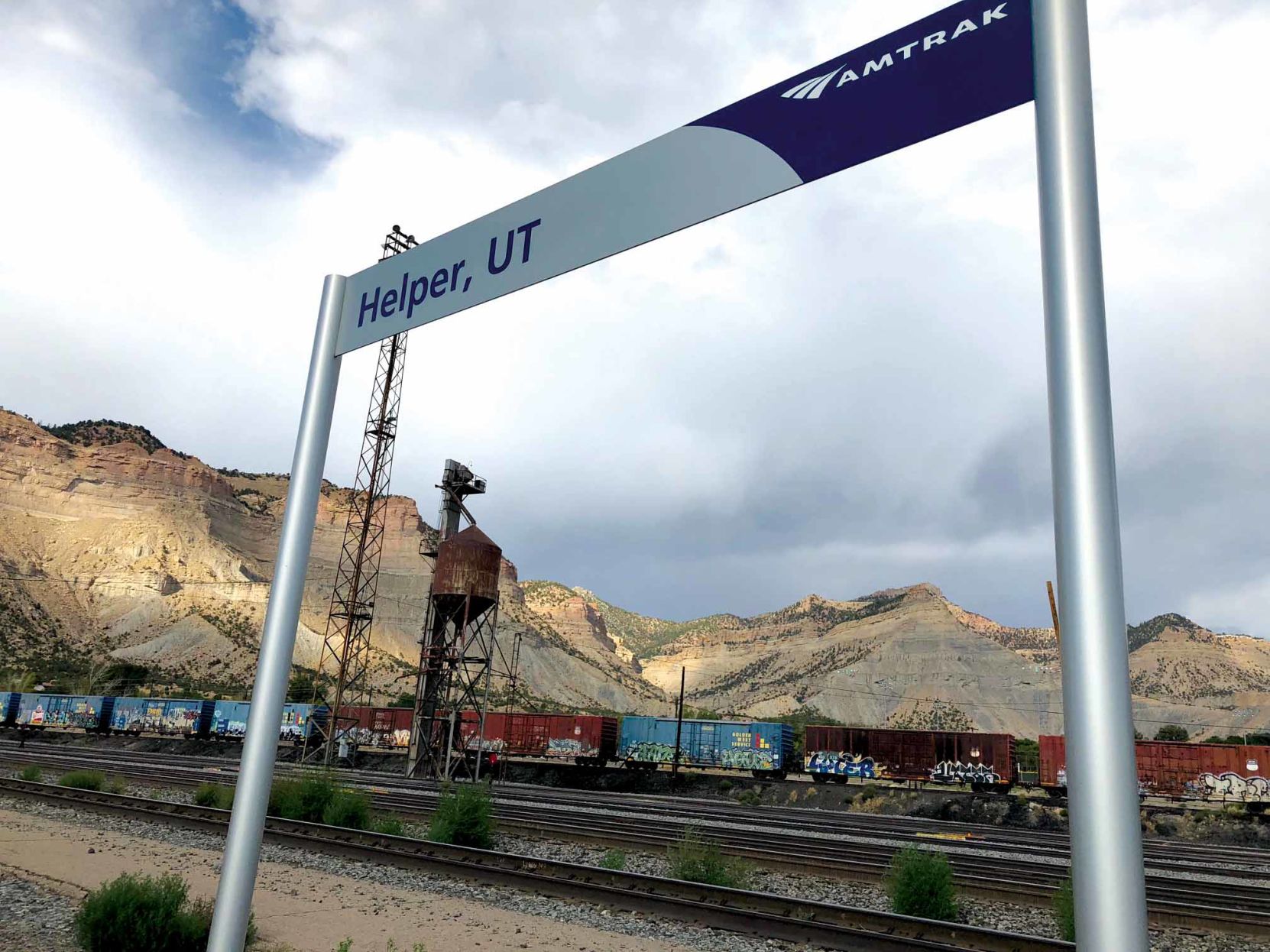The Utah Rail Passengers Association (URPA) is warning local mayors that Amtrak rail service through Carbon County may come to an end.
The association says a similar movement is already afoot for the Southwest Chief, an Amtrak line that runs from Chicago to Los Angeles. The Zephyr line stretches some 2,438 miles from Chicago to San Francisco.
Amtrak’s chief executive, former Delta Airlines CEO Richard Anderson, is supposedly considering turning a portion of the Southwest Chief train line into a bus route from Dodge City, Kan. to Albuqueque, N.M.
Mike Christensen, executive director of the URPA, says if that plan is successful, Utah should expect a similar bus-bridge plan between Grand Junction or Green River and Salt Lake.
Locally, such a plan would impact Helper the most. It has a functioning depot with passenger service twice a day.
“(Anderson) has basically been on a mission to gut Amtrak from the inside,” Christensen said. “Amtrak hasn’t officially said anything about the California Zephyr and some of the other routes that are on the chopping block, but they have released details on a plan for the Southwest Chief.”
Christensen said not only has bus service been proposed along portions of that route but Amtrak plans to also eliminate first class services as well.
“The reason behind doing this, what they are claiming is it has to do with a federal safety rule called Positive Train Control, or PTC. It’s kind of a long story but they are basically supplying that rule as a justification for stopping train service on part of the route. The same conditions in place along that route exist on the California Zephyr route,” he said.
Christensen said he suspects Amtrak’s plans will greatly reduce ridership, which will then be how the train operator later justifies getting rid of the routes completely.
He said he believes this involves a ploy by Amtrak to rid itself of existing labor contracts. These contracts would force the train operator to pay employees for an extended period should the company arbitrarily decide to end service along those routes in which they are employed. Christensen said that if the routes were ended because of poor ridership numbers, however, then those labor contracts could not be enforced.
“They can get around that if there is a drop-off in ridership along the route,” he said.
In a letter to local mayors, Christensen urges the officials to contact their congressional representatives as well as sign a petition urging Amtrak to reverse course.
“It is important that Congress take measures to stop Richard Anderson from downsizing Amtrak service. It is important that the proposed changes to the Southwest Chief are not made, since the same logic that Anderson is using to threaten it would also apply to the California Zephyr and seven other Amtrak routes,” the letter reads.
Christensen said Amtrak’s CEO is citing the need to reduce costs on the federally-subsidized national train network as another reason for mulling the changes. However, he added, that it doesn’t make much sense since Amtrak recently won more federal funds from the last federal budget than it had in decades.
In August the U.S. Senate voted to pass a $2.5 billion funding bill for passenger rail service that ensured the Southwest Chief would continue along its established route beyond Jan. 1, 2019, which is when the bus-bridge plan was to take effect.
This month, in testimony before Congress, Amtrak officials reinforced that the changes to the Southwest Chief route would not take effect at the beginning of the year.
The Washington, D.C.-based Rail Passengers Association warned that this should not be taken as the end of Amtrak’s plans.
“This does NOT mean that Amtrak has pulled back from its proposal for a Southwest Chief bus-bridge,” the association reported Sept. 14.
Will Amtrak kill the California Zephyr route through Utah?

Helper AmtrakWEB
